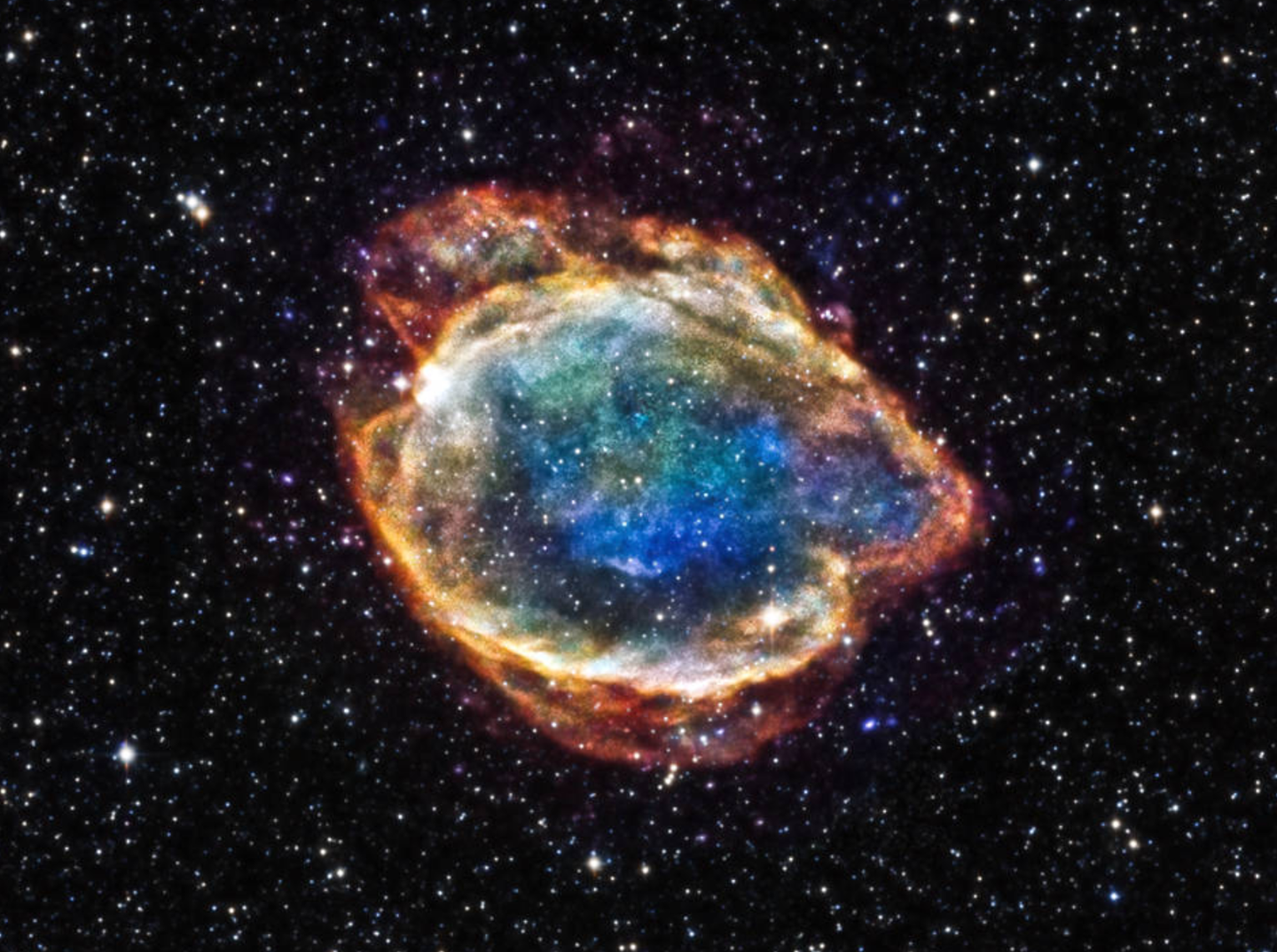Universal expansion may be slowing down rather than speeding up
A new study finds that Type Ia supernova brightness depends on stellar age, suggesting the universe may be slowing down rather than speeding up.

 Edited By: Joshua Shavit
Edited By: Joshua Shavit

Researchers used type Ia supernovae, similar to G299 pictured, to help establish that the universe’s expansion may actually have started to slow. (CREDIT: NASA/ESA)
For decades, we have been taught that the universe is expanding faster and faster. That belief has influenced our view of distant galaxies, how cosmologists have built their theories, and how researchers have described a mysterious, repulsive force we reference as dark energy. This idea even won scientists the Nobel Prize in Physics. Recently, however, new evidence suggests that this narrative could be more complex and much more personal than we may have once thought.
A team based in Yonsei University in South Korea analyzed thousands of measurements of distance based on Type Ia supernovae, long regarded as reliable beacons for measuring the expansion of the universe. These bright explosions of stars have been used as “standard candles”, which means that the brightness of the supernova is expected to be the same, after making some well-tested corrections.
These supernovae are explosive events, and while you may never see one yourself, they have served as the basis for nearly every major conclusion regarding dark energy. The new analysis suggests that those assumptions should be carefully re-investigated.
How Ages of Stars Shape a Cosmic Narrative
When we are told that the distant supernovae appear dimmer than expected, the conclusion we draw is that the universe is accelerating. However, that dimness is based on the idea that all standardized Type Ia supernovae emit the same intrinsic brightness, regardless of the age of their respective stars. The team at Yonsei found this not to be true.
By directly measuring the ages of 300 host galaxies, the researchers found something surprising with extremely high confidence. Once standard corrections were applied, supernovae from younger stars were consistently fainter, while explosions from older stars were brighter. The effect is unspectacular but very powerful. It adds up as you go deeper into space and backward in time. When the team corrected for the age-related bias, the whole cosmic expansion story changed.
We may not think twice about the distances to a distant star, but this study shows that it alters how bright a supernova appears post-standardization. Over billions of years of galaxy formation, all galaxies are going to produce different mixtures of young and old stars. Thus, the average Type Ia supernova in a distant galaxy will carry a systematic brightness offset in the data compared to a Type Ia in a closer galaxy. After fixing for this effect in the data, the results no longer fit the expectations of a universe driven by a static force of dark energy.
The Universe Slowing Down, Not Speeding Up
After removing the age-related bias, the supernova data fit much better with results from the baryon acoustic oscillation and the cosmic microwave background. These independent probes act like rulers for the early Universe. The data tells the same consistent story without the input of supernovae.
What the combination of corrected supernova data suggests is even more remarkable. The Universe is likely not accelerating right now. It may have already entered a slowed-decelerating phase. Lead researcher Professor Young-Wook Lee called the findings "remarkable" and claimed they show dark energy changing much more rapidly through time than previously understood.
If you've grown accustomed to thinking of dark energy as a constant push ubiquitous through all of space, this shift can feel somewhat unsettling. And yet this is how science works. A detail that feels small, like the age of the star behind a supernova, can ripple out into the scientific community and force you to rethink foundational concepts.
Why This Matters to You
A question of how the universe behaves is not just a question of physics. It is part of how we think about beginnings, endings, and our place in an infinite and fragile universe. If dark energy evolves, then we live in a universe that is far more dynamic than previously imagined. The long-term fate of that universe becomes uncertain. The universe may not expand indefinitely and may not do so increasingly fast for as long as we can understand those forces.
This also touches the well-known Hubble tension, an ongoing disagreement on how fast the universe expands. If younger supernovae behave differently from older supernovae and that difference is not accounted for, the distance ladder used to measure cosmic distance may be incorrect. Correcting that bias might bring the local Hubble constant value down, which may help in reducing the difference between early universes and late universes.
A New Path Forward
In order to test their data, the Yonsei team used an "evolution-free" method. They used a selected sample of only supernovae from young, closely matched galaxies across all distances. Furthermore, these data showed the same trend as the corrected full sample. That was an important independent check.
Looking forward, astronomers expect an explosion of new data from the Vera C. Rubin Observatory. In the next five years, they will monitor and measure more than 20,000 galaxies that host a supernova. They will also be able to measure stellar ages to a far better precision than is feasible at this point. Those measurements may be able to prove whether the cosmic shift suggested by the results of this study is real or whether another layer of complexity is yet to be presented in the cosmos.
As we think about the results, it is helpful to remember that science is rarely settled after one result. The universe has plenty of mysteries that challenge our assumptions. Still, this work demonstrates something hopeful: more answers are on the way, and they may produce better clarity about the cosmos that you space calls home.
Research findings are available online in the journal Monthly Notices of the Royal Astronomical Society.
Related Stories
- Earth may lie in a gigantic void that skews our view of the expanding universe
- Astronomers believe the universe isn’t just expanding - it's spinning too
- Dark matter may end our universe in a 'Big Crunch'
Like these kind of feel good stories? Get The Brighter Side of News' newsletter.
Joseph Shavit
Science News Writer, Editor-At-Large and Publisher
Joseph Shavit, based in Los Angeles, is a seasoned science journalist, editor and co-founder of The Brighter Side of News, where he transforms complex discoveries into clear, engaging stories for general readers. With experience at major media groups like Times Mirror and Tribune, he writes with both authority and curiosity. His work spans astronomy, physics, quantum mechanics, climate change, artificial intelligence, health, and medicine. Known for linking breakthroughs to real-world markets, he highlights how research transitions into products and industries that shape daily life.



